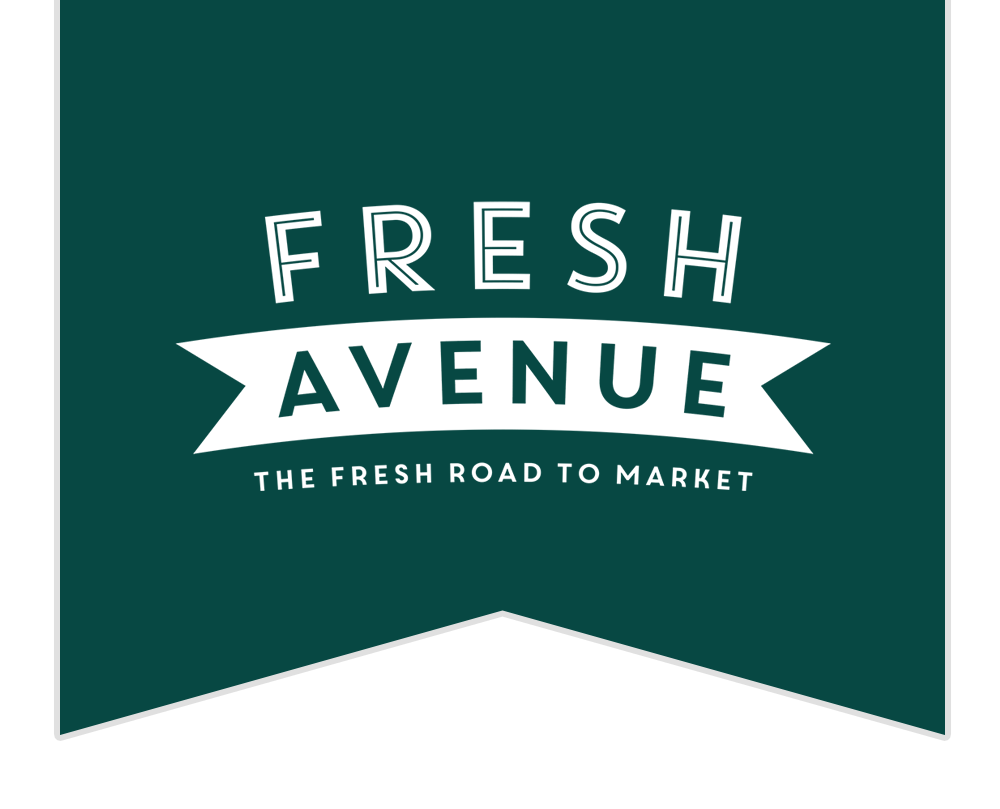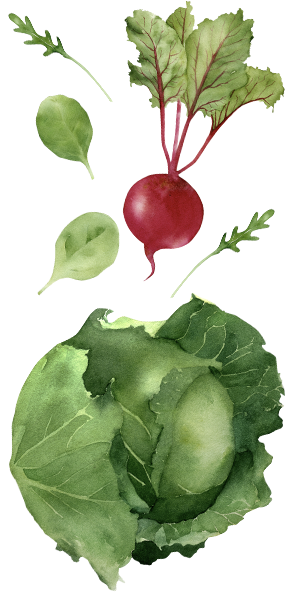Here and there we like to break away from the business speak and look at food history, specifically the history surrounding fresh produce. It’s a rather fascinating topic and when you take those deep dives, there are many lessons to be found that are relevant for our modern work and life.
I took a class on American Food History a few years ago and for my final paper I wanted to answer a question that had bothered me since I had discovered this food phenomenon of the 50’s: why savory Jello? To clarify, this isn’t the potluck Jello salad with fruit and whipped topping, no, I’m talking tuna, olives, pimentos suspended in a lemon gelatin mold. Yes, it was a thing. Now you may be thinking, what does that have to do with produce? Well, in many of the recipes of the Jello mold era was produce, either suspended in the gelatinous mass or used as a garnishment. But when I learned that some of these Jello molds had a questionable set of ingredients, I had one question: why? So I wrote a six page paper on it.
Savory Jello?
You may be surprised, but gelatin has been around for centuries. Before the well-known fruity salad served at family gatherings and church dinners, there was aspic- meats encased in gelatin. However, Jello as we know it went from the previous method of boiling hooves to a powdered mixture and was marketed with a variety of flavors. This is the sensation we are familiar with and enjoyed as a kid or sustained us when we were sick. It became quite popular in the 1950’s-1960’s, but coming from the world of aspic into what we know of it as a desert, it encountered a weird moment to our modern standards.
Scientific Cooking
In this era, household cooking was predominately the job of the wife and mom. We’ll take a better look at that later, but in this time women were experimenting with different cooking methodologies. Scientific Cookery was all the rage, bringing an elevation and status to the domestic role. However, it valued food composition and aesthetics over flavor. Enter savory Jello. When assembled in a copper mold, the ingredients could be suspended and layered in an artistic fashion. Molded gelatins fit perfectly in the scientific cookery methodology and its priority for pretty, artistic food.
Culinary Capital
Another piece of the savory Jello puzzle is from an idea in the book, Culinary Capital by Peter Naccarato and Kathleen LeBesco. It reveals how we show our social status through the foods we prepare, serve, and eat. Molded gelatins were featured at dinner parties of this time and took time and money to prepare, an indicator of wealth and status. In modern times we think of Jello with childhood or an aunt’s Jello salad. The idea that Jello was a status symbol is lost on younger generations, but this shows the power of our food trends and the interesting paths they take us!
Women’s Liberation
This is where these fragments of the Jello phenomenon of the 1950’s and 1960’s starts to take shape. In this time period, women were increasingly leaving their domestic roles for office and a career. No longer was fulfillment only found in the domestic arts or the kitchen with culinary capital. However, as women left their kitchens for the office, that left a vacancy for who would prepare the food of the household. With that same arc of women leaving the domestic kitchen for the office and the marketing of Jello, there seems to be some ties. By the 1990’s, Jello was popularized as a child’s snack, something served by the busy, and oftentimes professional mom.
Add the Role of Sugar
An interesting side-note in the shift away from savory Jello is the absence of a dedicated person to prepare a household’s meals. Historically, sugar became a bigger stable ingredient when women had to work. This was pointed out by Judith Carney in her paper revealing that the home and workplace conflict is not at all a new phenomenon with women seeking out ways to feed their families outside of a full-time domestic role. Carney shows women in this dual-role on sugar plantations as well in English factories. Both groups turned to sugar as a source of quick calories. For the 1960’s and beyond, the sugar was included as an ingredient in the processed foods that created a taste that perpetuated, and possibly aided in the demise of savory gelatin.
Even in the post-savory Jello era we see the increase of sugar in our foods, evidenced by the state of our health. It may no longer be popularized in the form of Jello, but it is still a cheap source of quick calories. We are also seeing the pushback on this as we are looking once again to our foods for health and nutrition.
Thank you Julia Childs
The final blow for Jello, and all its sweet and savory forms, came from Julia Child’s renaissance of French cooking. She ushered in more traditional methods of cooking that took on momentum after the experiments we found in Scientific Cookery. Now, traditional aspic did appear, the first incarnations of savory gelatin dishes, and we see that aspic is part of her masterwork on French cooking. But it did not share the same features as the molded gelatins we had been seeing, not in the copper molds, not as aesthetically engineered.
So what we do see is the changing of trend in cooking methodology and thankfully for us a look back at the classics that prioritized whole ingredients and flavor in a time when manufactured foods were gaining a critical mass. This also shifted the culinary capital of women who continued to stay at home.
Putting it All Together
To wrap up, there were many factors that shaped the rise and fall of savory Jello in all its questionable glory. The cooking methodology of the time, culinary capital, women leaving the kitchen for the workplace, and the historic phenomenon that as women work, there is more sugar consumed in the home. However, the saving grace is that there are usually a return to whole ingredients and tried and true methods of cooking. I think we see a little bit of that today, with renewed interest in the ingredients of our food, lesser use of sugar, and a return to fresh produce.
But what is the take-away for those of us in the produce, foodservice, and retail food industries? The lesson of savory Jello are multi-faceted.
- Culture and all the ideas, discoveries, and thinking of different time periods dictate much of what we eat, for good and bad. We see that with the influence of Scientific Cooking, and how food aesthetics was valued at times over flavor and nutrition. What are the trendy ideas in nutrition we currently are facing and can we recognize the ones that are helping and hurting us? I always like to think that a diet full of fresh produce stands the test of time, food trends, fad diets, and scientific theory.
- Food is a way we show status in our social circles, or culinary capital. In the 50’s elaborate food presentation indicated status, so Jello molds were one of many culinary status symbols. How are we showing status with our foods and even where we go to eat? Should we always base our choices on status? Again, produce is tried and true, serve it, eat it, and go to the restaurants that love it in their menu!
- Women’s liberation also played a part in ending the era of the Jello mold, because women went into the workforce leaving a void for the dedicated person in the home that managed all aspects of food and eating. For today with the need of two income households, there is no time for food prep for healthy meals. How can we as an industry change this and make it easier and more accessible to eat more produce for busy households?
- Unfortunately, we do see some trends when there is not that person in a household that has dedicated time to cooking, the replacement is sugar and convenience foods, which impacts the health of the household. Even in modern times, we see the parallel of health and income— because it takes more time and money to eat nutritiously, and so lower-income households simply can’t afford the time and money to dedicate to nutrition. How can we as an industry provide more access and affordability?
For us at Fresh Avenue, the answer for us is in addressing infrastructure and supply chain, creating more efficiencies so there is affordability and accessibility to fresh produce. This is the heart of our work and the history of savory Jello, in its own weird way, points to the importance of fresh produce and inspires us to work towards a fresher, and maybe less gelatinous future.
References from my Original Paper on Savory Jello for Further Reading!
General Foods Corporation, Joys of Jello, 3rd Edition, 2nd Printing (White Plains, NY: Gerard Arthus, 1964).
Lynn Y. Weiner, From Working Girl to Working Mother : The Female Labor Force in the United States, 1820-1980 (Chapel Hill: University of North Carolina, 1985)
Katherine J. Parkin, Food Is Love: Advertising and Gender Roles in Modern America (Philadelphia: University of Pennsylvania Press, 2007)
Laura Shapiro, Perfection Salad: Women and Cooking at the Turn of the Century (New York: Farrar, Straus, and Giroux, 1986)
Peter Naccarato and Kathleen LeBesco, Culinary Capital (London: Berg Publishers, 2012).
Jell-O Company and General Foods Corporation, Want Something Different?: 48 New Jell-o Entrées Relishes Salads Desserts (LeRoy, NY: Jell-O Company, 1931)
Irma S. Rombauer, The Joy Of Cooking (Indianapolis: Bobbs-Merril Co, 1943)
Judith Carney, “Reconsidering Sweetness and Power Through a Gendered Lens,” Food and Foodways 16, no. 2 (June 5, 2008): 127–34.
Levenstein, Harvey A., Revolution at the Table : The Transformation of the American Diet (Berkley and Los Angeles: University of California Press, 2003)
Julia Child, Mastering the Art of French Cooking (New York : Knopf, 2001); Paul Child and Mass) WGBH (Television station Boston, The French Chef Episode #262: Elegance with Aspic, 1972, 1972
Sue Bruley and Laurel Forster, “Historicising the Women’s Liberation Movement,” Women’s History Review 25, no. 5 (2016): 697–700.





